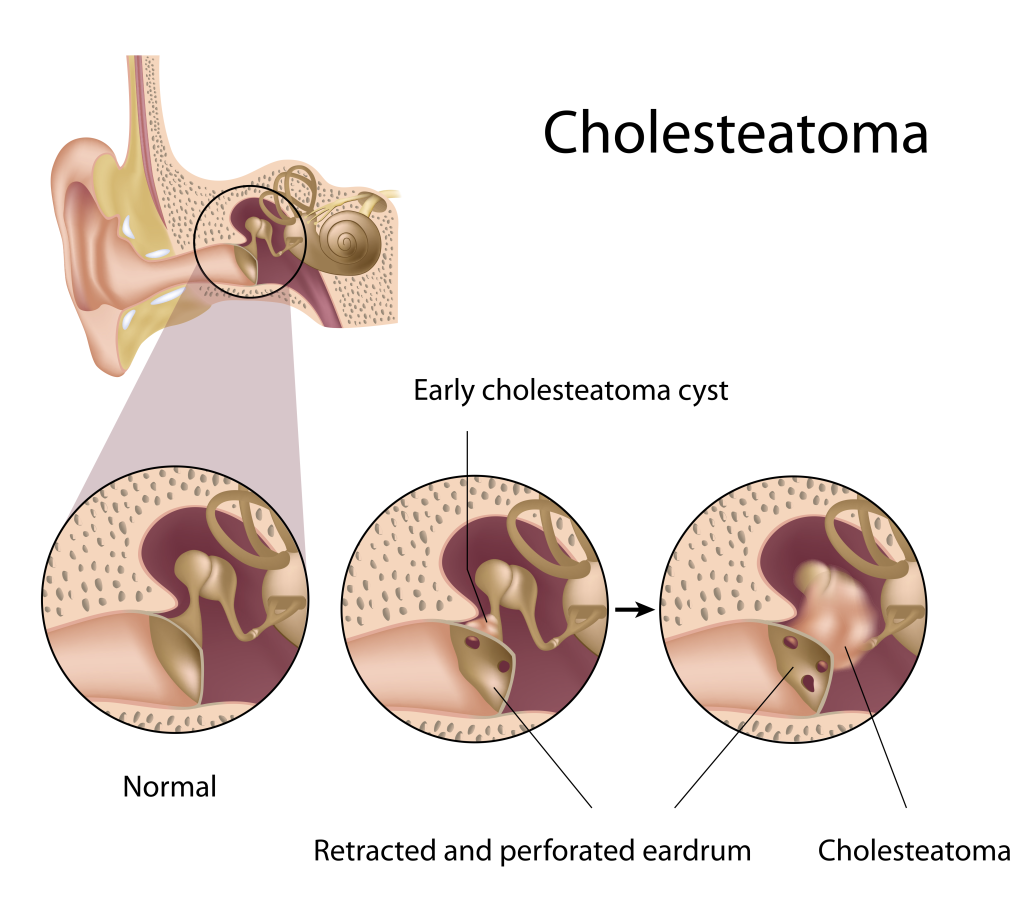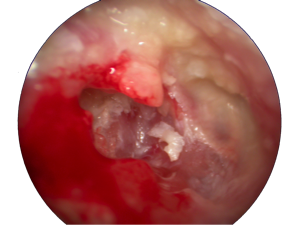Cholesteatoma
A cholesteatoma corresponds to the presence of a cyst containing skin cells at the level of the ear or the temporal bone. Cholesteatoma may be congenital, when these skin cells are reabsorbed spontaneously during the ear development.

More frequently, it is an acquired condition. A retraction pocket can evolve and eventually becomes a cholesteatoma. In this circumstance, the skin of the retraction pocket produces keratin that accumulates and forming the cyst. Cholesteatoma can lead to chronic infection with otorrhea. It can spread to the bone of the mastoid, which corresponds to the posterior bony portion to the ear.
The treatment of cholesteatoma is surgical. It includes resection of the cyst and reconstruction of the eardrum and ossicles, where this is necessary. If the cholesteatoma is not treated, it can eventually destroy various structures of the temporal bone. Thus, a cholesteatoma that has been neglected over a long period of time without supervision can lead to serious complications (eg, permanent hearing loss, vertigo, facial palsy, intracranial abscess).


__________________________
Anatomy and function of the ear
Definition
External Otitis
Otitis Media
Retraction Pockets
Cholesteatoma
Myringitis
Mastoiditis
Otosclerosis
Vestibular Schwannoma
